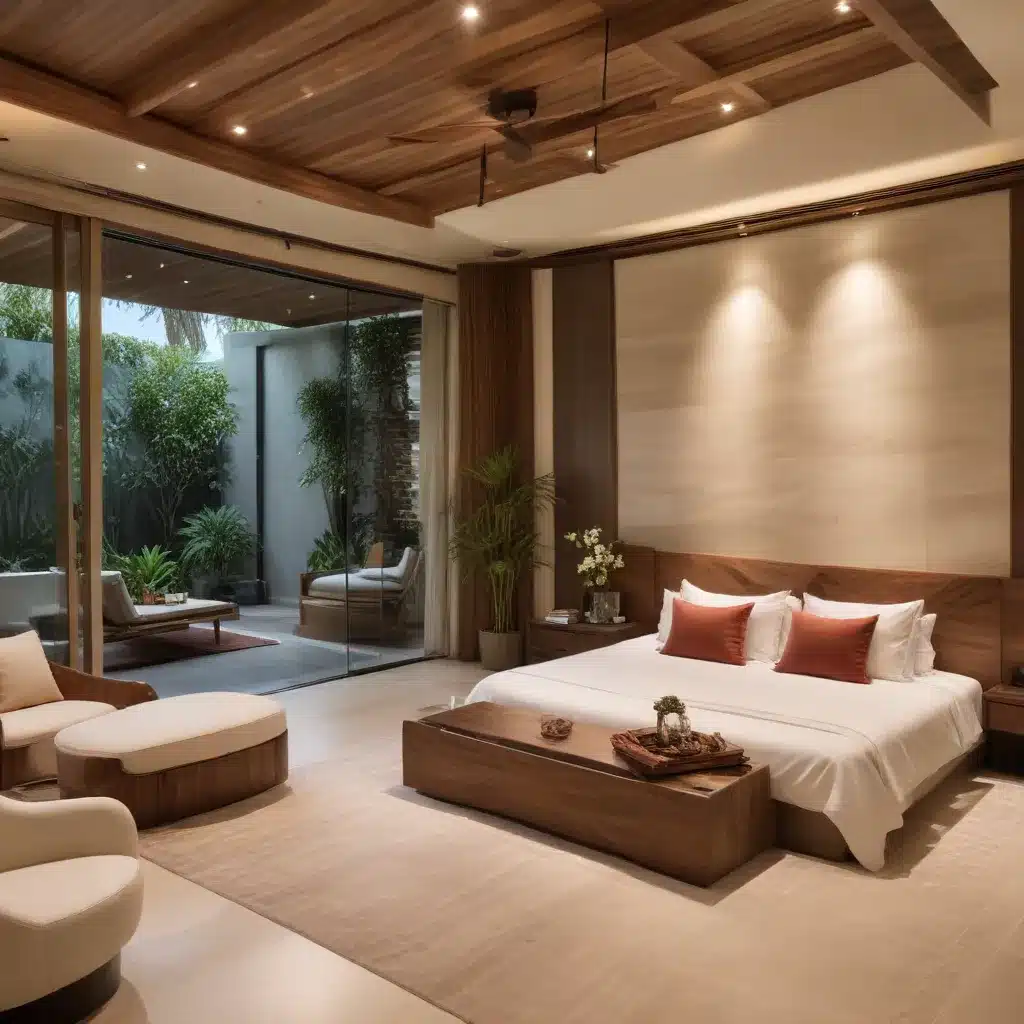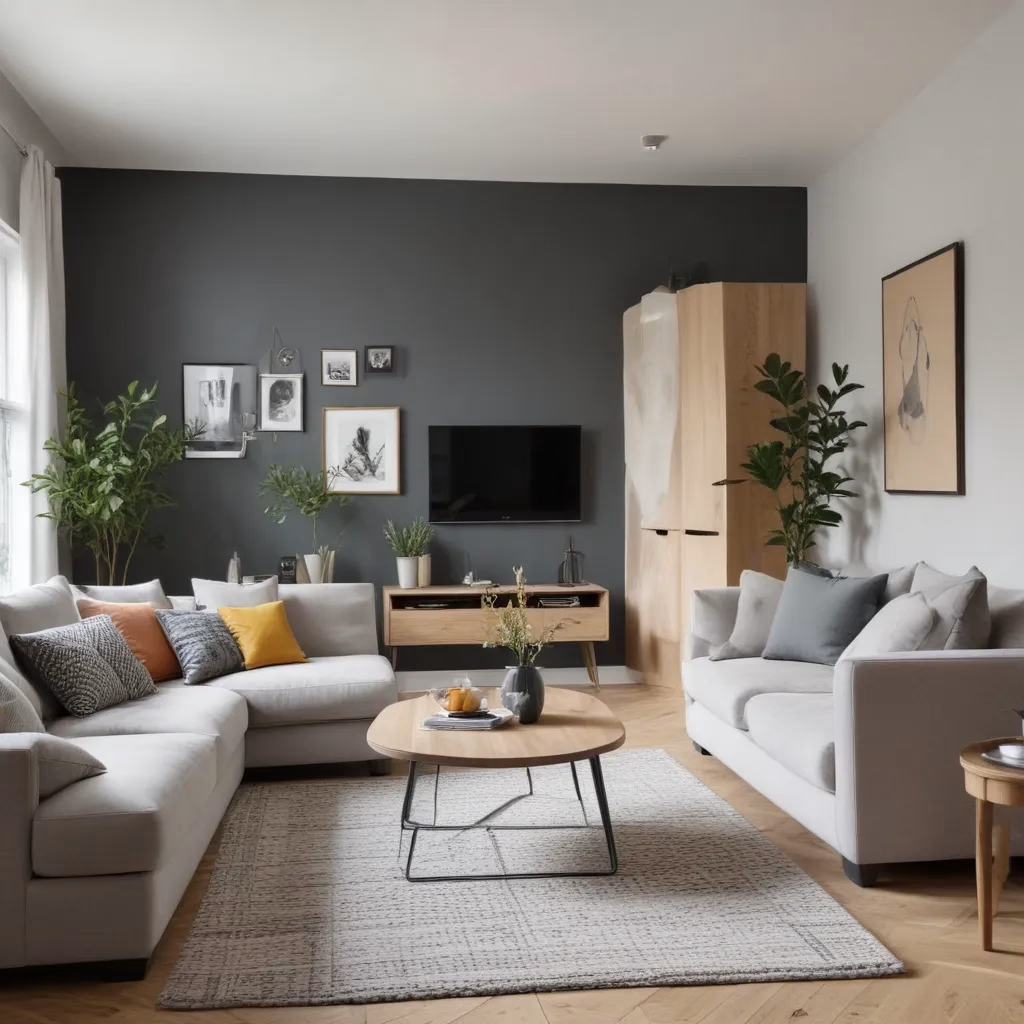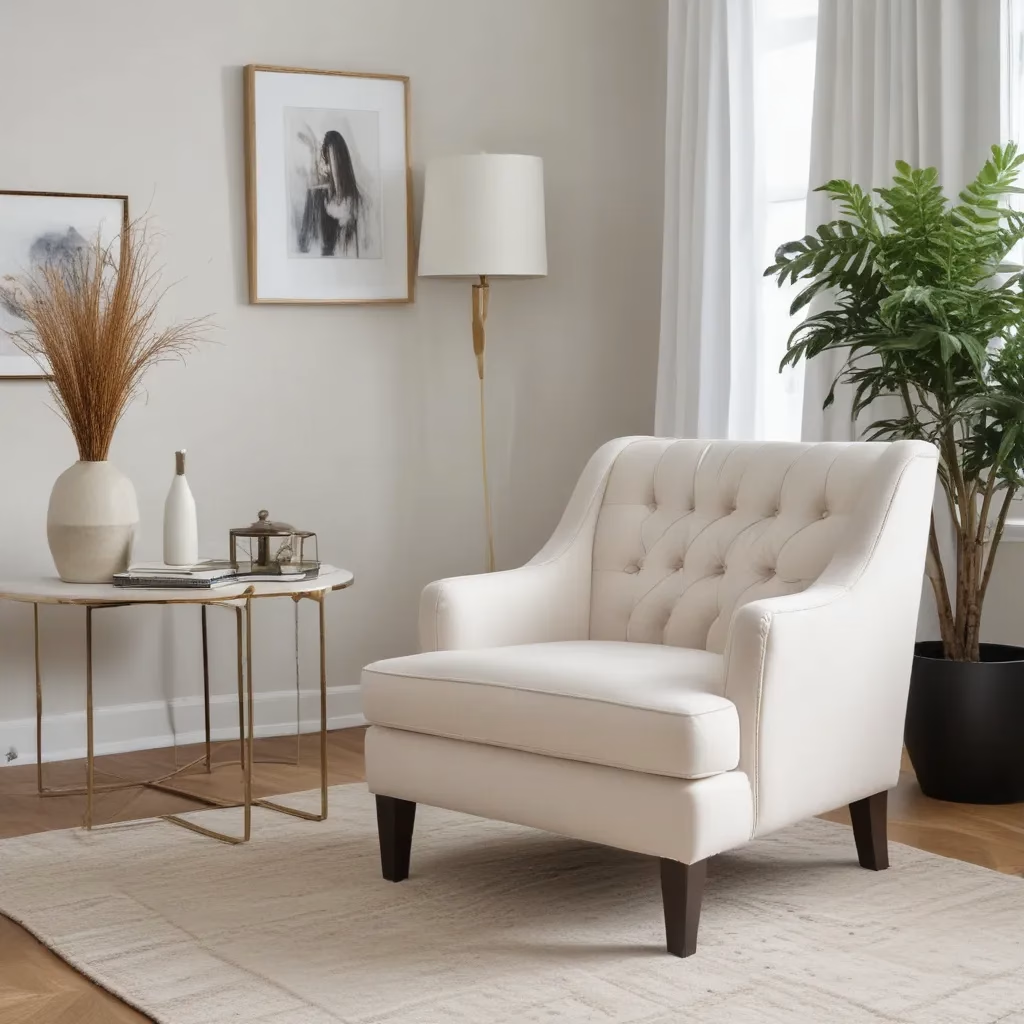
The Rise of Personalised Sofas in UK Homes
In recent years, the UK furniture market has seen a significant shift towards personalised, custom-designed sofas. This trend reflects a growing desire among homeowners to create living spaces that are uniquely tailored to their needs and preferences. No longer content with off-the-shelf options, consumers are increasingly seeking sofas that serve as centrepieces of their living rooms while offering optimal comfort and style.
The appeal of bespoke sofas lies in their ability to meet specific requirements that standard furniture often fails to address. Whether it’s accommodating an awkward room layout, matching a particular colour scheme, or providing extra support for those with specific comfort needs, custom-designed sofas offer solutions that are as individual as the homes they inhabit.
This move towards personalisation also aligns with a broader trend in interior design that values authenticity and individuality. Homeowners are looking to create spaces that reflect their personalities and lifestyles, and a custom sofa serves as a perfect canvas for self-expression. From the choice of fabric to the style of legs, every element can be tailored to create a piece that is truly one-of-a-kind.
Understanding Your Space: The First Step in Custom Sofa Design
Before diving into the world of custom sofas, it’s essential to have a clear understanding of your space. This involves more than just taking measurements; it’s about considering the room’s function, flow, and overall aesthetic.
Start by assessing the room’s dimensions and layout. Consider factors such as:
- Available floor space
- Ceiling height
- Window and door placements
- Natural light sources
- Existing furniture and fixtures
It’s also important to think about how the room is used. Is it a formal living room for entertaining guests, or a cosy family room for everyday relaxation? The answer to this question will influence many aspects of your sofa design, from the choice of materials to the overall style.
Consider creating a mood board that captures the essence of your desired aesthetic. This can include colour swatches, fabric samples, and images of other furniture or decor elements that inspire you. Having a visual representation of your vision will be incredibly helpful when communicating with designers and manufacturers.
Choosing the Right Style: From Classic to Contemporary
When it comes to custom sofas, the style options are virtually limitless. However, it’s important to choose a style that not only appeals to your personal taste but also complements your home’s overall design aesthetic. Here’s an overview of some popular sofa styles in the UK market:
Chesterfield
The Chesterfield sofa is a timeless classic that has been a staple in British homes for centuries. Characterised by its deep button tufting, rolled arms, and equal back and arm height, this style exudes elegance and sophistication. Modern interpretations of the Chesterfield can range from traditional leather versions to more contemporary fabric designs.
Mid-Century Modern
Inspired by the design movement of the 1950s and 60s, mid-century modern sofas feature clean lines, tapered legs, and minimalist aesthetics. These sofas often have a low profile and work well in spaces with a retro or contemporary vibe.
English Roll Arm
This style combines comfort with a touch of formality. English roll arm sofas typically feature low, rounded arms, loose back cushions, and turned legs. They offer a cosy, lived-in look that works well in both traditional and transitional interiors.
Sectional
Sectional sofas offer maximum flexibility and are ideal for larger spaces or open-plan living areas. Custom sectionals can be designed to fit your specific room layout, offering endless configuration possibilities.
Tuxedo
Characterised by its boxy shape and arms that are the same height as the back, the tuxedo sofa is a versatile option that can suit both modern and traditional interiors. Its clean lines make it an excellent choice for those who prefer a more structured look.
When selecting a style, consider how it will integrate with your existing furniture and decor. A well-chosen custom sofa should enhance your space, creating a cohesive and harmonious environment.
Materials Matter: Selecting Fabrics and Fillings for Comfort and Durability
The choice of materials for your custom sofa is crucial, as it affects both the look and feel of the piece, as well as its longevity. Let’s explore some popular options for upholstery and fillings:
Upholstery Fabrics
| Fabric Type | Pros | Cons | Best For |
|---|---|---|---|
| Cotton | Soft, breathable, easy to clean | Can wrinkle easily, less durable | Casual, everyday use |
| Linen | Natural, cool, elegant | Wrinkles easily, stains quickly | Formal spaces, adult households |
| Wool | Durable, warm, naturally stain-resistant | Can be scratchy, expensive | Long-term investment pieces |
| Leather | Durable, easy to clean, ages well | Expensive, can be cold to touch | High-traffic areas, pet-friendly homes |
| Velvet | Luxurious, soft, available in rich colours | Requires special care, shows marks easily | Statement pieces, low-traffic areas |
| Performance fabrics | Stain-resistant, durable, easy to clean | Can feel synthetic, limited texture options | Family rooms, homes with children or pets |
When selecting a fabric, consider factors such as durability, ease of cleaning, and how it will wear over time. It’s also worth thinking about the practical aspects of your lifestyle – for example, if you have pets or young children, a more robust, stain-resistant fabric might be a wise choice.
Fillings and Cushions
The internal structure and fillings of your sofa are just as important as its external appearance. Here are some common options:
-
Foam: Offers firm support and maintains its shape well. High-density foam is more durable and comfortable than lower-density options.
-
Feather and Down: Provides a soft, luxurious feel but requires regular plumping to maintain shape.
-
Fibre: A synthetic alternative to feathers, offering a softer feel than foam but firmer than feather fillings.
-
Combination Fill: Many custom sofas use a combination of materials, such as a foam core wrapped in feathers or fibre, to balance comfort and support.
The right filling will depend on your personal preferences for firmness and the level of maintenance you’re willing to undertake. Some people prefer the structured support of foam, while others enjoy the cosy, sink-in feeling of feather-filled cushions.
Ergonomics and Comfort: Designing for Relaxation
While aesthetics are important, the primary function of a sofa is to provide comfort. When designing your custom piece, pay close attention to ergonomic considerations that will ensure long-term comfort and support.
Seat Depth and Height
The ideal seat depth allows you to sit back comfortably with your feet touching the floor and your back supported. As a general rule:
- For taller individuals: Consider a seat depth of 58-63 cm
- For shorter individuals: A seat depth of 53-58 cm may be more comfortable
Seat height typically ranges from 45-50 cm, but this can be customised based on your height and preferences.
Back Support
The back of the sofa should provide adequate lumbar support. Consider options such as:
- Adjustable backrests
- Removable lumbar cushions
- Built-in lumbar support in the frame design
Arm Height and Style
Arm height and style can significantly impact comfort, especially if you like to lounge or nap on your sofa. Options include:
- Low arms for a more relaxed look and feel
- High arms for additional support when sitting upright
- Sloped arms for a balance between support and aesthetics
Remember that comfort is subjective, and what feels right for one person may not work for another. If possible, try out different configurations before finalising your design.
Customisation Options: Making Your Sofa Truly Unique
One of the joys of opting for a custom sofa is the ability to tailor every aspect to your preferences. Here are some areas where you can add personal touches:
Legs and Bases
The legs of your sofa can dramatically alter its overall look. Options include:
- Turned wood legs for a traditional feel
- Metal hairpin legs for a mid-century modern vibe
- Hidden legs for a sleek, contemporary appearance
- Casters for added mobility
Trims and Details
Small details can make a big impact. Consider:
- Contrast piping along cushion edges
- Decorative nailhead trim
- Buttoning or tufting patterns
- Fringe or tassel embellishments
Additional Features
Think about incorporating functional elements such as:
- Built-in storage compartments
- USB charging ports
- Reclining mechanisms
- Modular designs for flexibility
By carefully considering each of these elements, you can create a sofa that is not only comfortable and stylish but also uniquely suited to your lifestyle and preferences.
The Custom Design Process: What to Expect
Embarking on a custom sofa project can be an exciting but potentially daunting process. Understanding the typical steps involved can help you navigate the journey with confidence:
-
Initial Consultation: This is where you’ll discuss your ideas, preferences, and requirements with a designer or furniture maker. Bring along your measurements, mood board, and any inspiration images you’ve collected.
-
Design Proposal: Based on your input, the designer will create a proposal that includes sketches or 3D renderings of your sofa, along with suggested materials and finishes.
-
Revisions and Refinement: This stage involves back-and-forth communication to fine-tune the design. Don’t be afraid to ask questions or request changes – the goal is to create a sofa you’ll love for years to come.
-
Material Selection: Once the design is finalised, you’ll choose specific fabrics, fillings, and other materials. Many companies offer sample services, allowing you to see and feel options in your own home.
-
Production: After approving the final design and materials, your sofa will go into production. This process typically takes 6-12 weeks, depending on the complexity of the design and the manufacturer’s schedule.
-
Delivery and Installation: When your sofa is ready, it will be delivered and installed in your home. Some companies offer white-glove service, which includes setup and removal of packaging.
Throughout this process, clear communication is key. Don’t hesitate to ask for clarification or express any concerns you may have. A reputable custom furniture maker will be happy to work with you to ensure the final product meets your expectations.
Caring for Your Custom Sofa: Maintenance Tips for Longevity
Investing in a custom sofa is a significant decision, and proper care can ensure that your piece remains beautiful and comfortable for many years. Here are some maintenance tips to keep in mind:
Regular Cleaning
- Vacuum your sofa weekly to remove dust and debris.
- Rotate cushions regularly to ensure even wear.
- Address spills immediately to prevent staining.
Fabric-Specific Care
Different materials require different care approaches:
- Leather: Wipe with a damp cloth and use a leather conditioner every 6-12 months.
- Cotton and Linen: Spot clean with a mild detergent and water solution.
- Velvet: Use a soft brush to maintain the nap and avoid water-based cleaning methods.
Professional Cleaning
Consider having your sofa professionally cleaned every 12-18 months, or more frequently in high-traffic homes.
Protecting from Sunlight
Direct sunlight can fade fabrics over time. Use window treatments or periodically reposition your sofa to prevent uneven fading.
Structural Maintenance
- Tighten loose screws or bolts as needed.
- If your sofa has removable legs, check them periodically to ensure they’re secure.
By following these care instructions and any specific guidelines provided by your furniture maker, you can help ensure that your custom sofa remains a cherished part of your home for years to come.
The Environmental Impact: Sustainable Options in Custom Sofa Design
As awareness of environmental issues grows, many consumers are looking for ways to make more sustainable furniture choices. Custom sofa design offers several opportunities to reduce environmental impact:
Sustainable Materials
- Organic Fabrics: Look for upholstery options made from organic cotton, hemp, or other sustainably grown fibres.
- Recycled Materials: Some manufacturers offer fabrics made from recycled plastics or other reclaimed materials.
- FSC-Certified Wood: For wooden components, choose timber that’s certified by the Forest Stewardship Council (FSC) to ensure it comes from responsibly managed forests.
Low-VOC Options
Volatile Organic Compounds (VOCs) can be found in some foams and fabrics. Opt for low-VOC or VOC-free options to improve indoor air quality.
Durability and Longevity
One of the most environmentally friendly choices you can make is investing in a high-quality sofa that will last for many years, reducing the need for frequent replacements.
Local Production
Choosing a UK-based manufacturer can reduce the carbon footprint associated with shipping and support local craftsmanship.
End-of-Life Considerations
Discuss with your manufacturer about options for recycling or repurposing the sofa when it eventually reaches the end of its life.
By considering these factors, you can create a custom sofa that not only meets your aesthetic and comfort needs but also aligns with your environmental values.
Bringing It All Together: Creating Your Perfect Living Space
A custom sofa is more than just a piece of furniture; it’s an investment in your home and your daily comfort. By taking the time to consider all aspects of the design process – from style and materials to ergonomics and sustainability – you can create a sofa that perfectly suits your needs and enhances your living space.
Remember that the process of designing a custom sofa should be enjoyable and rewarding. Don’t rush your decisions, and don’t be afraid to ask questions or seek advice from design professionals. The end result will be a unique piece that reflects your personal style and provides comfort for years to come.
Whether you’re looking to make a bold statement with a vibrant velvet chesterfield or seeking the perfect family-friendly sectional, the world of custom sofas offers endless possibilities. By following the guidance outlined in this article and working with reputable furniture makers, you can navigate the custom design process with confidence and create a sofa that truly feels like home.
For more inspiration and to explore a wide range of sofa options, visit Sofa Spectacular. Their collection showcases the latest trends in sofa design and can serve as an excellent starting point for your custom sofa journey.



